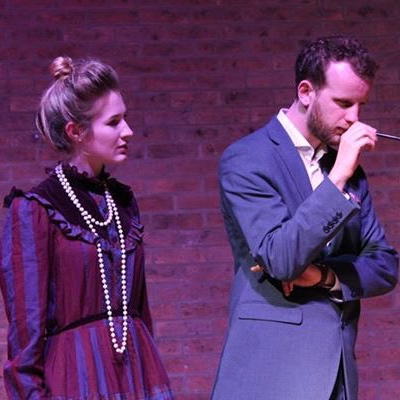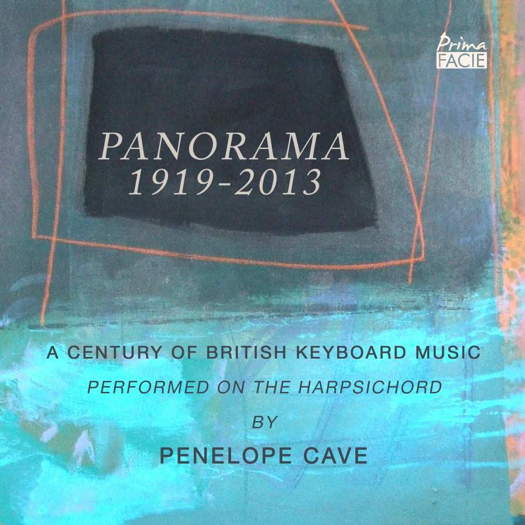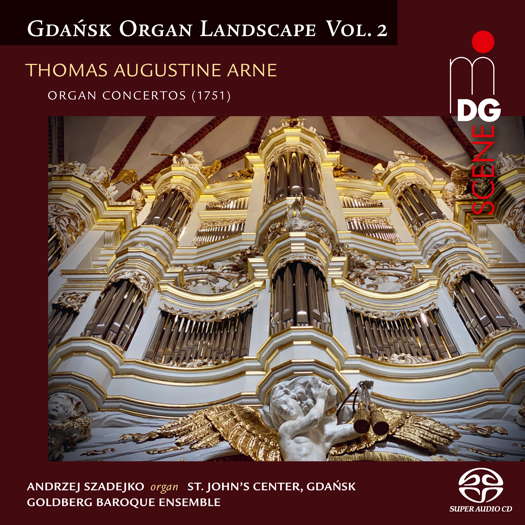- Udo Kasemets
- modernism
- Sven-David Sandström
- Auden
- Richard Dacey
- Wolfgang A Mozart
- Black Mozart
- Israel Baker
 SPONSORED: Ensemble. A Great Start - Freddie Meyers' new opera A Sketch of Slow Time impresses Alice McVeigh.
SPONSORED: Ensemble. A Great Start - Freddie Meyers' new opera A Sketch of Slow Time impresses Alice McVeigh.
All sponsored features >>
 SPONSORED: CD Spotlight. A Fantastic Collection. Penelope Cave Panorama CD. Little-known harpsichord gems, strongly recommended by Alice McVeigh.
SPONSORED: CD Spotlight. A Fantastic Collection. Penelope Cave Panorama CD. Little-known harpsichord gems, strongly recommended by Alice McVeigh.
All sponsored features >>

Consistently Transparent
GERALD FENECH listens to organ concertos by Arne
'... a vibrant energy ...'
Thomas Arne (1710-1778) is best known for the popular patriotic song Rule Britannia and his musical settings of songs from plays by William Shakespeare. He was born in the Covent Garden area of London, to a family that had prospered in the upholstery business. He was educated at Eton College and was interested in music from his earliest youth. His sister, Susannah Maria Arne, was a famous contralto, who performed in some of his works, including his first opera Rosamund, performed in 1733. He taught her to sing and she first performed with him in 1732, along with her brother Richard.
In 1736 Arne married singer Cecilia Young, whose sister, Isabella, married the composer Frederick Lampe. Arne's operas and masques became very popular and he received the patronage of Frederick, Prince of Wales, at whose country home, Cliveden, the Masque of Alfred, featuring Rule Britannia, was first performed. In 1750, after an argument with David Garrick, Susannah left Drury Lane for Covent Garden Theatre, and her brother soon followed.
In 1755 Arne separated from his wife who, he alleged, was mentally ill. He had, in the meantime, begun a relationship with one of his pupils, Charlotte Brent, a soprano and former prodigy, who performed in some of his works. She later married a violinist. In 1777, shortly before his death, Arne and his wife were reconciled. The couple had one son, Michael, who was also a composer. Thomas Arne is buried at St Paul's, Covent Garden, London.
The composer's legacy is immense, having written in practically every genre of the time. Still, his greatest contribution was for the stage; indeed, Arne wrote music for about ninety stage works, including plays, masques, pantomimes and operas. Many of his dramatic scores are now lost, probably in the disastrous 1808 fire at the Royal Opera House, Covent Garden.
This splendid CD focuses on Arne's potential to write virtuosic concertos for any instrument, especially for the organ, and the five recorded here are prime examples of the composer's innate gift to write music that is so appropriate for this amazing, versatile instrument.
Listen — Thomas Arne: Allegro con spirito (Organ Concerto No 5 in G minor)
(MDG 902 2317-6 track 2, 1:21-2:14) ℗ 2024 MDG :
Indeed, these pieces are astonishingly different one from the other, but each one uses a lightness of touch that is so effective, and the music is consistently transparent as it sings and dances along with lively melodies and imaginative development of themes.
Listen — Thomas Arne: Allegro (Organ Concerto No 1 in C)
(MDG 902 2317-6 track 19, 0:00-0:44) ℗ 2024 MDG :
Unfortunately, Arne's music has always been somewhat overshadowed by that of Handel and, although these organ pieces are considered as superior in artistry to those of Handel, they are still languishing by the wayside. Hopefully, these brilliant performances by Andrzej Szadejko, accompanied by the wonderful Goldberg Baroque Ensemble, start to put the record straight.
Listen — Thomas Arne: Giga moderato (Organ Concerto No 4 in B flat)
(MDG 902 2317-6 track 16, 1:03-1:45) ℗ 2024 MDG :
I cannot leave out the dazzling organ used for this recording, the Johann Friedrich Rohde organ in St John's Church in Gdańsk, which has a wonderful elegance and lightness of sound ideal for the music from the second half of the eighteenth century. This precious instrument was completely destroyed during the Second World War and so it lay silent for seventy-seven years. After much painstaking work by Szadejko and two expert organ restorers, Guido Schumacher and Szymon Januszkiewicz, this historic instrument has been brought back to life.
Listen — Thomas Arne: Ad libitum. Veloce (Organ Concerto No 6 in B flat)
(MDG 902 2317-6 track 6, 1:24-1:50) ℗ 2024 MDG :
This superb MDG recording is the first to be made since the organ's restoration, and the festive baroque pomp of the majestic 'organo pleno' combined with the rich orchestral sound radiate a vibrant energy throughout the Gothic cathedral. Mainly for organ enthusiasts, but if you are interested in getting more acquainted with English organ music of the baroque era, this is a fine place to start. Sound and presentation are first-rate.
Copyright © 11 June 2024
Gerald Fenech,
Gzira, Malta



